We explain what Halloween is, how it originated, and the cultural traditions it includes. In addition, its characteristics and elements.
What is Halloween?
The celebration of Halloween (All Hallows' Eve), also known as Night of the Dead or Eve of the Dead, is a modern rite product of the Christianization of the pagan festivals of Celtic origin that took place at the end of the summer.
Its date of celebration is October 31 in the western countries of Anglo-Saxon tradition, such as the United Kingdom, the United States, Canada and Ireland, and to a lesser extent in Spain and Latin America (due to cultural penetration), or in Australia and New Zealand.
In its celebration , black, orange and purple decorations, costumes, scary stories and symbols such as the sculpted pumpkin (the famous Jack-o'-lantern) are used . Today it is a cultural landmark that has a strong presence in Western mass culture .
Halloween Story Features :
Name's origin
The term Halloween comes from the Scottish word for abbreviating All Hallows 'Eve (" All Hallows' Eve "), which was commonly said as Allhallow-even in the 16th century and used, since 1745, as Hallow-e'en .Other theories regarding its origin assure that it comes from the Latin word Hellequin , which is the name given among the Gauls to the head of the procession of the night of the dead, which would relate the term Halloween with the Spanish word “Harlequin”.
Syncretism
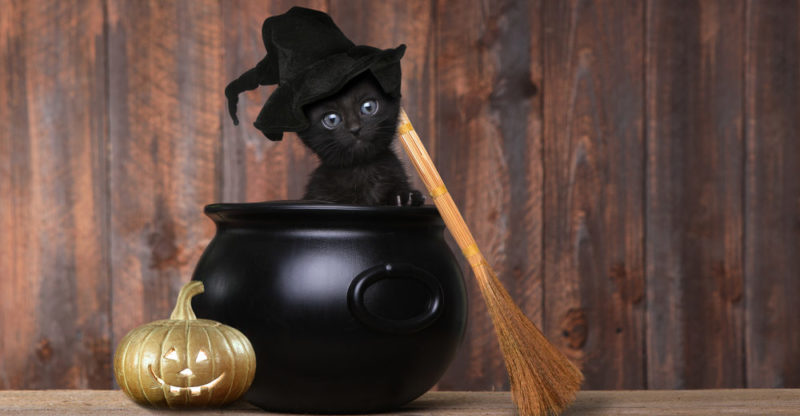 The history of Halloween is a clear example of what syncretism is: the conjunction throughout history of various traditions , imaginaries and societies in a kind of miscegenation that produces complex cultural products, a reflection of its diverse and mixed origin.
The history of Halloween is a clear example of what syncretism is: the conjunction throughout history of various traditions , imaginaries and societies in a kind of miscegenation that produces complex cultural products, a reflection of its diverse and mixed origin.In the case of Halloween it is about the Celtic, Roman, Christian, British and North American cultures . Other examples of this are a large part of the Latin American tradition (a mixture of European, native and African culture).
Celtic origins
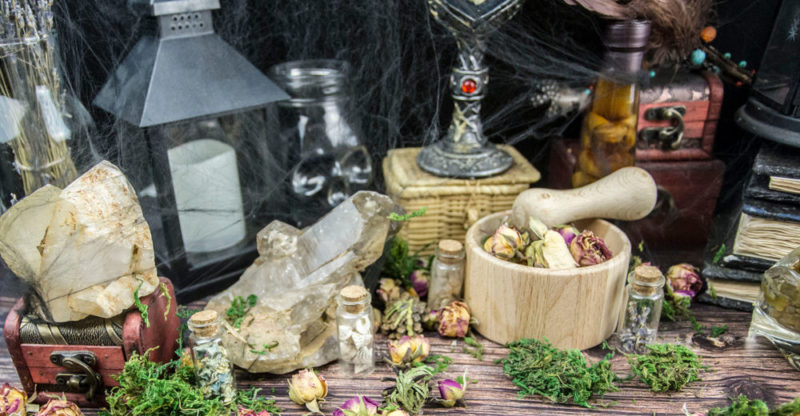 The Celts were a group of diverse and untamed tribes that inhabited the European regions corresponding today roughly to Spain, France and the United Kingdom.
The Celts were a group of diverse and untamed tribes that inhabited the European regions corresponding today roughly to Spain, France and the United Kingdom.Among their traditions was the celebration of the summer solstices , in a rite called Samhain ("End of Summer") in Old Irish, or Calan Gaeaf in the language of the ancient Britons. This holiday is supposed to mark the beginning of a new Celtic year and the temporary opening of the door to the world of the dead.
The Celts then wore masks and costumes to drive away evil spirits and invoke the protection of the favorable.
Romanization and Christianization
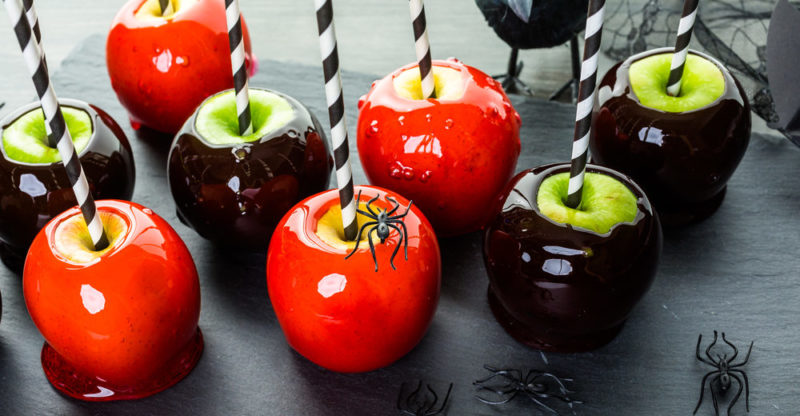 Eventually, the Celts were displaced and colonized by the Roman Empire and later Christianized by various evangelists such as Saint Patrick. Thus, pagan festivals were assimilated and reconverted into the Christian imagination, giving rise to festivals such as All Saints' Day, which is still celebrated on November 1.
Eventually, the Celts were displaced and colonized by the Roman Empire and later Christianized by various evangelists such as Saint Patrick. Thus, pagan festivals were assimilated and reconverted into the Christian imagination, giving rise to festivals such as All Saints' Day, which is still celebrated on November 1.Halloween, however, survived by adopting various Christian forms and contents, such as the presence of the apple, so important in the biblical story, but also linked to the Celtic celebration of the solstice.
Irish tradition
Irish culture, so unique, allowed the survival of Halloween and its pagan content within Great Britain, among many other Celtic traditions (such as the epic tales of Cuchulainn and Finn) that endured under English rule.
Arrival in the United States
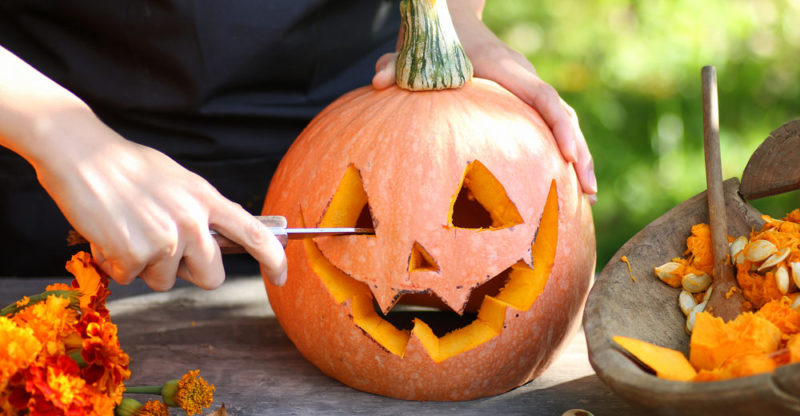 Halloween came to America together with the English settlers and there it was nourished by the imaginary of the witches (Salem). But it grew particularly with the arrival of the Irish who fled to America from the Great Famine of 1845-1849.
Halloween came to America together with the English settlers and there it was nourished by the imaginary of the witches (Salem). But it grew particularly with the arrival of the Irish who fled to America from the Great Famine of 1845-1849.It was they who implanted the pumpkin carving and much of the imaginary that is still preserved. However, it was not until 1921 that Halloween was celebrated en masse in the United States.
Present
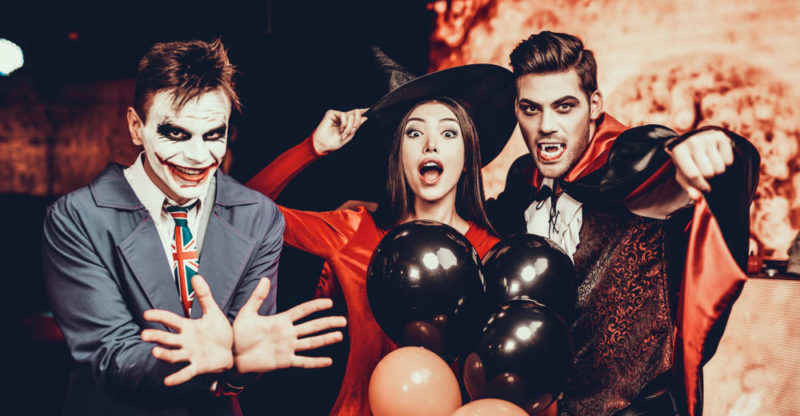 The tradition of Halloween is now one of the main celebrations of the American calendar and Anglo - Saxon, in terms of visibility in mass communication , mass celebration and even adoption by other companies.
The tradition of Halloween is now one of the main celebrations of the American calendar and Anglo - Saxon, in terms of visibility in mass communication , mass celebration and even adoption by other companies.It has become an important icon in mass culture with representations in film and television , associated with children's costumes, the imaginary of horror stories and home decorations with spider webs, bats and pumpkins sculpted and illuminated from the inside. .
Representative elements of Halloween
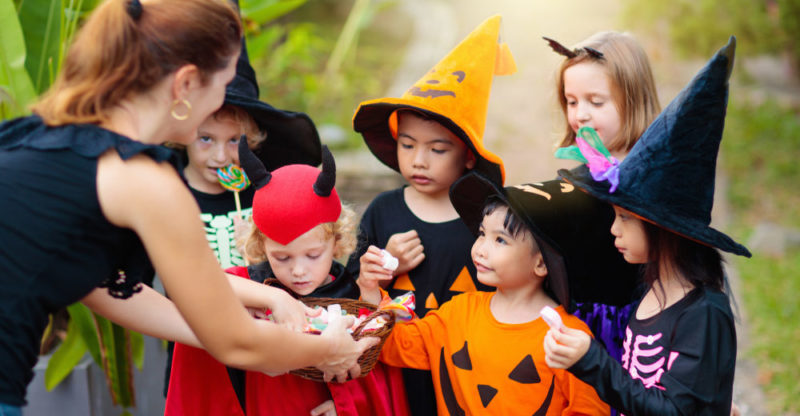 The contemporary version of Halloween is often associated with:
The contemporary version of Halloween is often associated with:
- Trick or Treat ( Trick-or-Treat ). The children often disguise themselves as monsters, superheroes and other fictional characters and visit the houses of the neighborhood, claiming their neighbors candy, under threat of subjecting them to a "trick" or a prank.
- Jack-o-Lantern . An essential part of the Halloween set, this old Irish tale ("Stingy Jack") is represented by faces carved from pumpkins and lit from within by a candle. According to this account, Jack would have been a man of very bad living who ended his days as a lost soul, holding a lantern to illuminate his path.
- Processions Just as children dress up and trick-or-treating around the neighborhood in the United States, in other regions processions of costumed people are organized , commemorating the march of the deceased into the afterlife. In Mexico these festivals coincide with the ancient native celebration of the Day of the Dead, in which parades, special meals and folk music are organized.
Gastronomy
 In the United States, on this day, a particular gastronomy is usually elaborated that, coinciding with the annual apple harvest (and certain symbols already explained), consists of sweet, sugary or peanut-coated apples .
In the United States, on this day, a particular gastronomy is usually elaborated that, coinciding with the annual apple harvest (and certain symbols already explained), consists of sweet, sugary or peanut-coated apples .In Ireland, it is a tradition to bake fruit cakes , into which a ring and a coin are inserted, as an omen of the future fortune of whoever obtains them: love or wealth will smile at you.
In the Mexican case, gastronomy is more complex and rich: the bread of the dead, sweet skulls , saint's bones and many other forms of food are traditional to commemorate the date.
Meaning of Halloween
The original meanings of Halloween have varied over time in our culture, and today they are detached from their origins as a commemoration of the end of the harvest season.Instead, it has acquired other senses that point to the connection with the hereafter, with the world of spirits and with the imaginary of the sinister, of vampires, monsters, and ghosts.
Hence, it has been a frequent setting for films, novels, and fictional horror stories.
The above content published at Collaborative Research Group is for informational and educational purposes only and has been developed by referring to reliable sources and recommendations from technology experts. We do not have any contact with official entities nor do we intend to replace the information that they emit.
Veronica is a culture reporter at Collaborative Research Group, where she writes about food, fitness, weird stuff on the internet, and, well, just about anything else. She has also covered technology news and has a penchant for smartphone stories. .
Leave a reply
Your email address will not be published. Required fields are marked *Recent post

Sport: What Is It, Types, Risks, Features, Characteristics and Examples

Dogs: Emergence, Features, Characteristics, Feeding and Breeds

Story: Definition, Elements, Structure, Features and Characteristics

